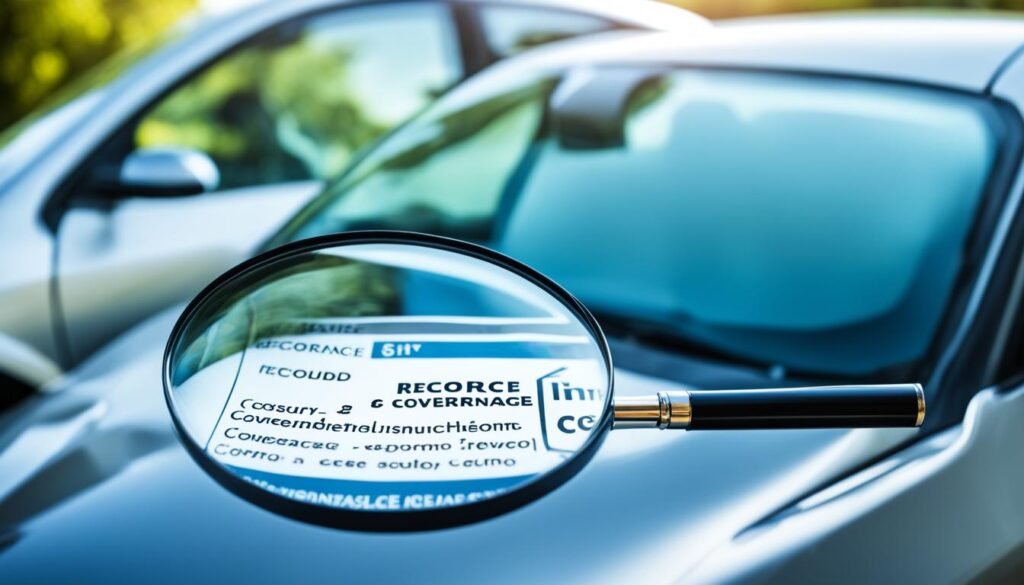Navigating the world of How Much Insurance For Car can be a complex task, with numerous factors influencing the cost and coverage you’ll need to protect yourself and your vehicle. In this comprehensive article, we’ll explore the key considerations that determine how much insurance you should have for your car, including coverage levels, driving history, vehicle characteristics, location, personal factors, and insurance company policies.
By understanding these crucial elements, you’ll be empowered to make an informed decision on the right amount of car insurance to safeguard your assets and provide the necessary protection in the event of an accident or other incident. Whether you’re shopping for a new policy or reevaluating your current coverage, this article will guide you through the essential factors to consider when determining how much insurance for your car.
Key Takeaways
- The amount of car insurance you need depends on a variety of factors, including your coverage levels, driving history, vehicle characteristics, location, and personal factors.
- Understanding the minimum legal requirements and assessing your personal risks can help you determine the appropriate balance between liability and full coverage policies.
- Your driving record, including accidents and traffic violations, as well as your credit-based insurance score, can significantly impact your car insurance rates.
- The make, model, and year of your vehicle, along with its safety features and theft risk, can also influence the cost of your car insurance.
- Factors like your geographic location, commuting distance, and usage patterns can play a role in determining your car insurance premiums.
Understanding Auto Insurance Costs
When it comes to protecting yourself and your assets on the road, having adequate auto insurance coverage is crucial. The auto insurance costs and car insurance premiums you pay can significantly impact your financial well-being, both in the short and long term. In this section, we’ll delve into the importance of sufficient insurance coverage and explore the balance between affordable insurance premiums and reasonable insurance costs.
The Significance of Adequate Coverage
In the event of an accident or other incident, the right car insurance coverage can safeguard you from devastating financial consequences. Without proper protection, you may be responsible for costly repairs, medical bills, and legal fees, which can quickly deplete your savings and assets. By investing in a comprehensive auto insurance policy, you can have peace of mind knowing that you’re covered in the face of unexpected circumstances.
Balancing Premiums and Deductibles
Striking the right balance between insurance premiums and deductibles is crucial when determining the appropriate cost of car insurance for your needs. While lower insurance prices may seem attractive, opting for a policy with high deductibles can leave you vulnerable in the event of a claim. Conversely, choosing a policy with very low deductibles may result in higher pay for car insurance premiums, potentially stretching your budget. By carefully evaluating your personal risk tolerance and financial situation, you can find the sweet spot that provides the necessary protection without breaking the bank.
Ultimately, understanding the auto insurance premiums and affordable car insurance options available to you is key to ensuring you have the coverage you need to safeguard yourself and your assets. By striking the right balance between cost and protection, you can pay for auto insurance with confidence, knowing that you’re prepared for whatever the road may bring.
Factors Affecting Car Insurance Rates
Understanding the various factors that affect car insurance is crucial when it comes to managing your car insurance rate. Insurance companies carefully consider a range of factors like your driving history, the type of vehicle you drive, your geographic location, and personal characteristics to determine your insurance rating factors. By being aware of these factors that affect car insurance, you can proactively work to impact your car insurance costs and potentially qualify for discounts.
One of the primary factors that affect your car insurance is your driving record. Insurance companies closely consider factors that affect car insurance, such as your history of accidents, traffic violations, and claims. A clean driving record with no incidents can significantly impact the cost of car insurance you pay, while a history of risky behavior can lead to higher car insurance rates.
The type of vehicle you drive is another crucial factor that affects car insurance. Factors like the make, model, and year of the car can impact your car insurance premiums. Vehicles with higher safety ratings, anti-theft features, and lower repair costs are generally viewed more favorably by insurance companies considering factors when setting car insurance rates.
Your geographic location is also an important factor that affects car insurance. Insurance companies often consider factors like whether you live in an urban or rural area, as well as your commuting distance and mileage, as these can impact the cost of car insurance. Factors such as the risk of theft, accidents, and natural disasters in your area can also influence your car insurance rate.
Personal characteristics, such as your age, gender, marital status, and occupation, can also be factors that insurance companies consider when determining your car insurance rate. While these factors that affect car insurance may seem out of your control, understanding how they impact your car insurance can help you make informed decisions and potentially qualify for discounts.
By being aware of the key factors that affect car insurance, you can proactively manage your car insurance rate and ensure you’re getting the best coverage at the most affordable price. Remember, factors that affect car insurance can vary, so it’s essential to shop around, compare quotes, and take advantage of available discounts to find the right insurance policy for your car.
| Factor | Impact on Car Insurance Rates |
|---|---|
| Driving History | A clean driving record with no accidents or violations can lead to lower car insurance rates, while a history of risky behavior can result in higher insurance costs. |
| Vehicle Type | Factors like the make, model, and year of your vehicle can impact the cost of car insurance. Vehicles with high safety ratings, anti-theft features, and lower repair costs tend to have lower insurance premiums. |
| Geographic Location | Living in an urban vs. rural area, as well as your commuting distance and mileage, can affect car insurance rates. Factors like the risk of theft, accidents, and natural disasters in your area can also influence your car insurance. |
| Personal Characteristics | Age, gender, marital status, and occupation are factors that insurance companies consider when determining car insurance rates. These personal factors can impact the cost of car insurance you pay. |

How Much Insurance for Car
When it comes to determining the appropriate amount of car insurance coverage, it’s important to consider both the legal requirements and your personal risk factors. The minimum legal requirements for liability insurance vary by state, but generally include bodily injury liability and property damage liability to protect other drivers on the road. However, these minimum limits may not fully cover the costs associated with an accident, leaving you vulnerable to financial liability.
Minimum Legal Requirements
Most states require drivers to carry a minimum amount of liability insurance to cover damages and injuries to others in the event of an accident. These minimum requirements typically range from $15,000 to $50,000 in bodily injury coverage per person and $30,000 to $100,000 in bodily injury coverage per accident, as well as $5,000 to $25,000 in property damage coverage. It’s important to check the specific laws in your state to ensure you meet the minimum legal requirements for car insurance.
Assessing Personal Risks
In addition to the legal minimums, you should also consider your personal risk factors when determining how much insurance to cover your car. Factors such as your driving record, the value of your vehicle, your assets, and your lifestyle can all influence the appropriate level of car insurance coverage. For example, if you have a history of accidents or moving violations, or if you have significant assets to protect, you may want to consider higher liability limits or even full coverage car insurance.
Liability vs. Full Coverage
When it comes to types of insurance, there are two main options to consider: liability insurance and full coverage. Liability insurance covers damages and injuries to others if you are found at fault in an accident, while full coverage includes additional protection for your own vehicle, such as collision and comprehensive coverage. While full coverage may come with a higher price tag, it can provide valuable protection in the event of an accident, especially if you have a newer or more expensive vehicle.
| Liability Insurance | Full Coverage |
|---|---|
| Covers damages and injuries to others if you are found at fault | Includes collision and comprehensive coverage for your own vehicle |
| Meets the minimum legal requirements in most states | Provides additional protection for your own car |
| May have lower premiums than full coverage | Can have higher premiums, but offers more comprehensive protection |
By understanding the minimum legal requirements, assessing your personal risk factors, and weighing the benefits of liability versus full coverage, you can make an informed decision on the right amount of car insurance to protect yourself and your assets. Remember, car insurance is regulated in most states, so it’s important to comply with the law and ensure you have the appropriate coverage.

Your Driving History Matters
Your driving history is a crucial factor that insurance companies closely evaluate when determining your car insurance rates. They closely examine your record of accidents and violations to assess the level of risk you pose as a policyholder.
Accidents and Violations
If you have a history of getting into car accidents or receiving traffic violations, such as speeding tickets or reckless driving citations, insurance companies will view you as a higher-risk driver. They use this information to calculate the likelihood of you filing a claim in the future, which directly impacts your insurance costs. The more incidents on your driving record, the higher your premiums are likely to be.
Credit-Based Insurance Scores
In addition to your driving record, insurance companies also consider your credit-based insurance score when setting your rates. This score, which is different from your standard credit score, is a measure of your financial responsibility and risk profile. Insurance companies use this information to predict the likelihood of you filing a claim and making timely premium payments. A higher credit-based insurance score can help you qualify for lower insurance scores and premiums.

By understanding how your driving history and credit-based insurance score impact your car insurance rates, you can take steps to improve these factors and potentially lower your overall insurance costs. Maintaining a clean driving record, avoiding accidents and violations, and managing your credit responsibly can all contribute to more favorable insurance companies’ view of your risk profile.
The Vehicle You Drive
When it comes to car insurance, the specific vehicle you drive can have a significant impact on your coverage costs. Factors like the make, model, and year of your car, as well as its safety features and theft risk, all play a crucial role in determining your auto insurance premiums.
Make, Model, and Year
Insurance companies closely examine the characteristics of the type of car you drive, including the make, model, and year. Newer, more expensive, and high-performance vehicles tend to have higher insurance rates, as they are costlier to repair or replace. Conversely, older, less valuable, and more common vehicles often have lower insurance costs.
Safety Features and Theft Risks
The safety features and theft risks associated with your car can also significantly impact your car insurance rates. Vehicles equipped with advanced safety technologies, such as collision avoidance systems, airbags, and anti-theft devices, are generally viewed more favorably by insurance providers and may qualify for discounts. On the other hand, cars that are commonly targeted by thieves or have a higher probability of being involved in accidents can lead to higher insurance premiums.

By understanding how the car you drive influences your insurance costs, you can make more informed decisions when purchasing a new vehicle. This information can help you strike the right balance between your transportation needs and the impact on your overall insurance expenses.
Location and Usage Patterns
Your geographic location and driving patterns can have a significant impact on the cost of your car insurance. Whether you live in an urban or rural area, and the distance and frequency of your daily commute, can all factor into the premiums you pay.
Urban vs. Rural Areas
Residing in an urban environment generally carries higher insurance costs compared to rural areas. Factors like population density, increased traffic congestion, and higher rates of accidents and vehicle theft in cities can all contribute to elevated auto insurance premiums. Conversely, living in a less populated, rural locale may qualify you for lower insurance rates due to the decreased risk exposure.
Commuting Distance and Mileage
The distance and frequency of your daily commuting can also impact your car insurance costs. Drivers who rack up higher annual mileage, whether from a lengthy commute or frequent recreational driving, tend to pay more for coverage. Insurance companies view increased mileage as a higher risk factor, as you’re more likely to be involved in an accident or incident while behind the wheel. Opting to park your car more often or finding ways to reduce your daily driving can help mitigate these insurance expenses.

Personal Factors to Consider
When it comes to determining your car insurance rates, insurers often take into account certain personal factors beyond your driving history and vehicle characteristics. These factors can include your age, gender, marital status, and occupation. Understanding how these personal elements can impact your car insurance can help you identify potential discounts or ways to optimize your coverage.
Also Read : Building A Secure Future State Farm Home Insurance
Age and Gender
Insurance companies may consider your age and gender when setting your car insurance premiums. Generally, younger drivers, particularly those under the age of 25, are viewed as higher-risk and may pay higher rates. Similarly, some insurers may charge higher rates for male drivers compared to female drivers, based on statistical data regarding accident and claim rates.
Marital Status and Occupation
Your marital status and occupation can also influence your car insurance rates. Married individuals are often seen as more responsible and less likely to file claims, leading to potential discounts. Additionally, certain occupations, such as those in law enforcement or the military, may qualify you for special discounts or rates from some insurance companies.
| Personal Factor | Impact on Car Insurance |
|---|---|
| Age | Younger drivers typically pay higher rates due to perceived higher risk. |
| Gender | Some insurers may charge higher rates for male drivers based on accident and claim data. |
| Marital Status | Married individuals may receive discounts due to being viewed as more responsible. |
| Occupation | Certain professions, such as law enforcement or military, may qualify for special discounts. |
Insurance Company Policies
When it comes to determining your car insurance rates, the specific policies and practices of insurance companies can play a significant role. Insurance companies look at a variety of factors to price their policies, and understanding how they operate can help you make more informed decisions about your coverage.
Comparing Rates and Discounts
One of the key factors to consider is how insurance companies compare rates and offer discounts. Different providers may have varying pricing models, coverage options, and incentive programs that can impact the cost of your policy. By shopping around and comparing quotes from multiple insurers, you can find the best combination of coverage and affordability that meets your needs.
Many insurance companies offer a range of discounts to help lower your premiums, such as good driver discounts, safe vehicle discounts, and bundling discounts for combining your auto insurance with other policies like homeowners or renters insurance. Understanding the available discounts and how they apply to your specific situation can help you maximize your savings.
Bundling Policies
Another strategy that insurance companies might use to price their policies is bundling. By purchasing multiple insurance policies from the same provider, such as auto and home insurance, you may be able to take advantage of bundling discounts that can significantly reduce your overall costs. Insurance companies often use bundling as a way to incentivize customers and retain their business.
Ultimately, understanding the policies and pricing strategies of different insurance companies can help you make an informed decision about the right coverage for your vehicle and budget. By comparing rates, taking advantage of available discounts, and considering the benefits of bundling, you can find the most suitable and cost-effective insurance solution for your needs.
Conclusion
In conclusion, the amount of car insurance you need depends on a variety of factors, including your vehicle, coverage levels, driving record, location, personal characteristics, and the policies of your chosen insurance provider. By understanding these key elements, you can make an informed decision on the right level of protection for your needs and budget.
Remember to shop around, compare quotes from companies like Geico, Progressive, State Farm, and Allstate, and take advantage of available discounts to ensure you get the best value for your automotive protection expenses. Evaluating your car insurance premiums and vehicle coverage rates can help you find the right balance between adequate coverage and affordable auto insurance costs.
Ultimately, investing in the appropriate level of car insurance is crucial to safeguarding your finances and assets in the event of an accident or unforeseen incident. By considering the factors outlined in this article, you can make an informed decision that provides the necessary protection for you and your vehicle.
FAQs
Q: What are the main factors to consider when determining how much insurance for a car you need?
A: Factors to consider include the type of car you drive, your driving history, where you live, the coverage levels you desire, and any specific insurance requirements in your state.
Q: How can I lower my car insurance costs?
A: You can lower your car insurance costs by maintaining a clean driving record, choosing a higher deductible, bundling policies, taking advantage of discounts, and driving a car that is less expensive to insure.
Q: What are the 10 factors that affect car insurance rates?
A: The 10 factors that affect car insurance rates include your age, driving record, location, type of car you drive, credit score, coverage levels, deductible amount, marital status, annual mileage, and insurance claims history.
Q: How does the type of car you drive affect your car insurance costs?
A: The type of car you drive can influence your car insurance costs as factors like the car’s make and model, safety features, theft rates, and repair costs can impact the insurance premiums you pay.
Q: What are some ways to save money on car insurance?
A: You can save money on car insurance by comparing quotes from different car insurance companies, asking about available discounts, maintaining a good credit score, choosing a higher deductible, and avoiding unnecessary coverage.
Q: Can insurance discounts help me save on my car insurance policy?
A: Yes, insurance discounts can help you save on your car insurance policy. Examples of discounts include safe driver discounts, multi-policy discounts, good student discounts, and discounts for having certain safety features on your car.
Q: How do auto insurance rates vary based on the car you drive?
A: Auto insurance rates can vary based on the car you drive because certain vehicles are more expensive to repair or replace, more likely to be stolen, or have higher horsepower, all of which can affect the insurance premiums you pay.




